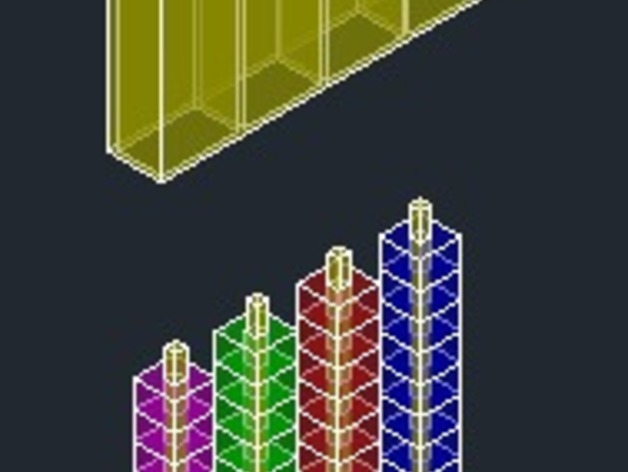
Abacus
thingiverse
The abacus is an essential tool for mastering counting fundamentals. Utilizing this tool greatly simplifies and accelerates the learning of basic numerical calculations, making it a valuable asset in primary schools to introduce students to abstract mathematics concepts. My enthusiasm for 3D printing originated at Rome Maker Faire, where I created numerous designs and thoroughly studied the characteristics of 3D printing throughout its various stages. I have many projects ready for printing, but unfortunately, I cannot afford to purchase or build a printer, so I'm hoping that participating in this competition will enable me to finally bring my project to life – it's been my lifelong dream. Print Settings Printer: None Rafts: No Supports: Yes Resolution: 0.25 Infill: 30 Notes: Only the lid requires supports, and you can adjust infill as desired. Post-Printing The components have been designed with precision to eliminate the need for post-processing actions. You can color the letters using permanent markers. How I Designed This I designed the abacus in Inventor, ensuring that everything is compact and closes neatly into a box. The rods are square-shaped to prevent the cubes from rotating. The lid is divided to separate the cubes by color when not in use. The base features a housing for the lid. Custom Section Objectives This simple tool facilitates learning basic calculations for children, making it compact, easy to use, and accessible. Audiences This instrument is dedicated to primary school children and their teachers who can utilize it as a learning medium. Moreover, this will introduce children to the exciting world of 3D printing. Preparation Printing and assembly are all that's needed! Step 1 Print the base in white first, so you can later color the letters: U-blue, DA-red, H-green, and K-violet. Step 2 Print the 4 rods, then attach them to the base using glue. Step 3 Print the cubes. There are 10 cubes for each color, so you'll need blue, red, green, and violet filament or you can color them in other ways. You can reduce infill density for them if desired. Step 4 Print the lid. You can rotate it to minimize supports, but be aware that it will be taller. Results Students can take advantage of this tool's interchangeability and customizability with their own names. Mathematics becomes easier to grasp and more enjoyable to learn. 3D printing enters students' lives, enabling them to explore its potential for both fun and passion.
With this file you will be able to print Abacus with your 3D printer. Click on the button and save the file on your computer to work, edit or customize your design. You can also find more 3D designs for printers on Abacus.
